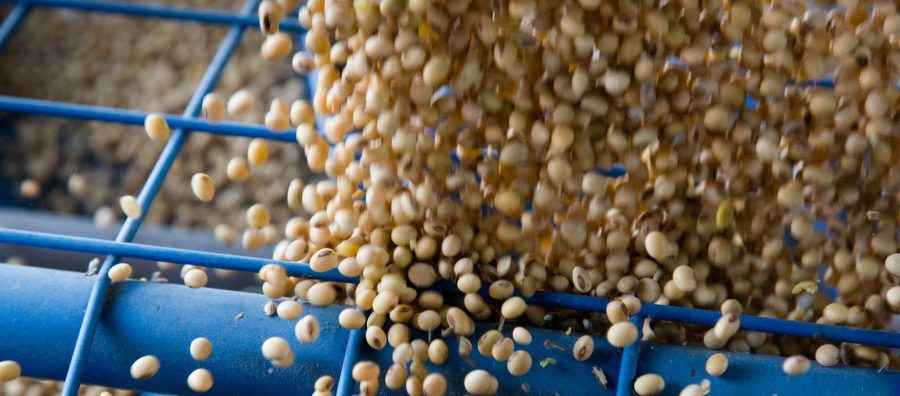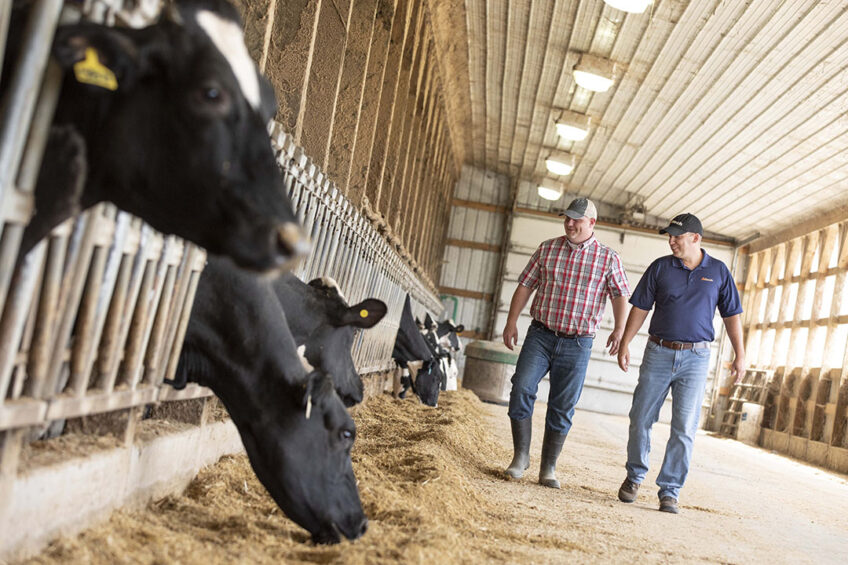Find out why 80% of U.S. dairy farms are facing tough times. Learn the hidden challenges and get tips to help your farm succeed. Ready to make a change?
Summary: This article dives deep into the crazy rollercoaster of challenges and opportunities modern dairy farmers face today, from labor shortages and regulatory headaches to the mind-blowing tech that’s shaking up our barns. It also covers the logistical nightmares of getting your milk to market and the vital importance of mental health in dealing with the emotional ups and downs of farm life. Tailored specifically for middle-aged male dairy farmers, this piece serves up practical advice and hard stats to help power and sustain your farming operation well into the future. The U.S. dairy industry is in a bit of a tight squeeze, with a whopping 80% of farmers struggling just to keep the lights on. What’s causing all this stress? You guessed it—unexpected bills, yo-yoing milk prices, and some seriously unpredictable weather. Economic pressures are hitting our rural communities hard, making it urgent to pinpoint the root of the problems and whip up some solid solutions. Milk prices have been on a wild ride over the last decade. We saw the average milk price drop from $18.83 per cwt in 2014 all the way down to $16.92 per cwt in 2018. And let’s not forget about input costs, which make up nearly 50% of dairy production expenses. These costs have shot up thanks to higher prices for corn and soybean meal. Market volatility, international trade policies, shifting consumer tastes, and climatic events all add to the mix, messing with our profitability. Knowing these economic pressures inside out and tweaking your strategies can help you dodge some of these curveballs, slash input costs, and ramp up productivity.
- Labor shortages pose significant challenges for dairy farm operations.
- Regulatory compliance adds complexity but is crucial for sustaining your farm’s future.
- High-tech dairy farming offers both opportunities and potential overload in operations.
- Logistics of getting milk to market can feel overwhelming.
- Mental health is critical in managing the emotional demands of farm life.
- 80% of U.S. dairy farmers are struggling with financial stability.
- Market volatility and fluctuating milk prices impact profitability.
- Input costs, such as corn and soybean meal, comprise nearly 50% of production expenses and are rising.
- Adapting strategies to economic pressures can help slash costs and boost productivity.

It’s no secret that the dairy business is experiencing difficulties, with 80% of U.S. dairy farmers failing to make ends meet. Many variables contribute to this issue, ranging from unexpected expenditures, changing milk prices, and unpredictable weather to economic pressures that result in losses (USDA ERS, 2021). This is more than simply economics; the dairy business’s viability directly influences the fabric of our rural communities. The closure of dairy farms has far-reaching consequences, making it necessary to identify underlying difficulties and create effective solutions.
This Shocking Truth About Dairy Farming Will Keep You Up at Night
As a dairy farmer, you’re no stranger to the economic pressures that affect your bottom line. The fluctuating milk prices, rising input costs, and unpredictable market conditions can make even the most seasoned dairy operator anxious.
According to the USDA Economic Research Service, milk prices have shown significant volatility over the past decade. For instance, the average milk price dropped from $18.83 per cwt in 2014 to $16.92 per cwt in 2018, showing how unstable this revenue stream can be.
Input costs are another critical economic pressure. Feed costs alone constitute nearly 50% of the total cost of dairy production. In recent years, these costs have escalated due to higher prices for corn and soybean meal, essential components of cattle feed.
Moreover, market volatility is a persistent challenge. International trade policies, changes in consumer preferences, and climatic events can all impact your profitability. The USDA reports that the U.S. dairy export market is susceptible to global trade policies, which has been especially evident during trade disputes that affect tariff rates on dairy exports.
Understanding these economic pressures and adapting your strategies can help you mitigate risks. Keep a close eye on market trends and consider diversifying your income streams. It might also be worth exploring new technologies and sustainable practices to reduce input costs and boost productivity. Remember, knowledge is power, and staying informed can help you navigate these choppy economic waters.
Labor Shortages: Are You Preparing Your Farm for the Future?
Labor shortages are a severe concern for dairy farms. Many farms depend on a steady and trained crew to sustain output, so labor shortages may significantly affect everyday operations. The National Milk Producers Federation reported in 2014 that around 51% of dairy farm workers in the United States are immigrants. However, stricter immigration rules make recruiting and keeping these critical personnel difficult.
Another critical concern is the availability of trained personnel. More is needed to fill jobs; personnel must also comprehend the nuances of dairy farm operations. According to a 2020 assessment by Texas A&M University, the U.S. dairy sector faces a 20% manpower shortfall, resulting in financial losses and lower production.
Because of the labor shortage, many farms must run at half capacity or spend extensively training new, less experienced staff. Consequently, many dairy farmers have resorted to automation and technology such as MilkingCloud to help them deal with workforce shortages. While these solutions are beneficial to some degree, they come with their issues and costs, requiring a considerable initial investment.
Regulatory Challenges: Your Ultimate Survival Guide
Dairy producers face ongoing regulatory obstacles. Let us break it down:
Environmental Regulations: You are probably all too acquainted with the Clean Water Act implemented by the Environmental Protection Agency (EPA). This regulation mandates cautious control of manure and nutrient runoff. Furthermore, several states have even stronger municipal environmental restrictions that may result in significant penalties for noncompliance. California, for example, has strong air quality rules to decrease methane emissions from cattle (California Air Resources Board).
Animal Welfare Standards: The Animal Welfare Act (AWA) establishes the animal treatment standard. However, several governments and even grocery corporations have implemented harsher limits. You may be required to meet these additional criteria to sell your milk in some marketplaces. For example, the American Humane Certified program requires stringent welfare criteria, including living conditions and veterinarian treatment.
Food Safety Requirements: The Food Safety Modernization Act (FSMA) mandates that dairy farms verify that their products are safe for consumption. This includes preventative measures, adequate documentation, and scheduled inspections. The FDA enforces the Grade “A” Pasteurized Milk Ordinance (PMO). It requires testing for somatic cell counts and bacteria, necessitating ongoing monitoring to achieve the norms.
Compliance with these standards incurs financial costs and requires ongoing adaptation and learning. It’s rugged terrain, but remaining educated may help you successfully navigate it.
The Shocking Truth About High-Tech Dairy Farming: Opportunity or Overload?
Technology in contemporary dairy production is a two-edged sword. On the one hand, new technology like automated milking systems, precision feeding, and health monitoring can potentially increase production and significantly improve animal well-being. Studies have proven that automated milking devices enhance milk output by 10-15% (Jones et al., 2022), resulting in greater farm profitability.
These prospects, however, are with their obstacles. The initial costs of implementing such technology might be prohibitively expensive. According to USDA studies, an automated milking system may cost anywhere from $150,000 to $200,000 per unit (USDA, 2023). This is not a pocket coin and may put significant financial pressure on many mid-sized dairy farms.
In addition to the financial load, there is also a steep learning curve. You must do more than install and expect a new system to work well. Teaching yourself and your employees to utilize these technologies properly takes time. According to a Dairy Farmers of America survey, farms that implemented new technology required an average of six months to a year to achieve ideal performance levels (DFA, 2023).
Furthermore, switching to high-tech solutions frequently entails becoming more technologically aware. That might be unsafe if you’re used to conventional agricultural practices. Don’t worry; many organizations provide training classes and tools to help you get up to speed. For example, the Dairy Learning Center offers online courses to help dairy producers adapt to new technology (DLC, 2023).
So, although technology has the potential to enhance efficiency and production dramatically, it is critical to assess the costs and carefully plan for the shift. After all, a seamless transition is only possible if you are entirely aware and willing to accept the change.
Have you ever felt like David Facing Goliath When It Comes to Getting Your Milk to Market? You’re Not Alone.
Have you ever felt like David taking on Goliath when bringing your milk to market? You are not alone. Large dairy firms dominate the sector due to their vast resources and established supply networks, making it difficult for small and medium-sized farmers to carve out their niche. These major businesses have a sizable market share, with the top 10% of farms providing more than 60% of the country’s milk production (USDA, 2022).
But there are other problems. Alternative milk products such as almond, soy, and oat milk are gaining market share yearly. In 2021, plant-based alternatives accounted for over 15% of the global retail milk market. This expansion is driven by increased customers seeking non-dairy alternatives owing to health concerns, lactose intolerance, or environmental causes.
Breaking past these hurdles is a war that small and medium-sized dairy producers must wage with strategic thinking and flexibility. Some approaches to regaining your share of the pie include diversifying your product range, concentrating on local markets, and even becoming organic. It’s a difficult journey, but understanding the terrain is the first step toward effectively navigating.
Surviving the Emotional Rollercoaster: How to Protect Your Mental Health on the Dairy Farm
When dealing with dairy farmers’ mental health and well-being, it’s critical to acknowledge their specific concerns. Financial stress, long work hours, and social isolation are daily in this sector. It’s not just about cows; it’s about juggling many obligations that may significantly influence your mental health.
Statistics provide a dismal picture. According to the Centers for Disease Control and Prevention (CDC), farmers have a higher suicide incidence than other occupations (CDC, 2017). Furthermore, a poll done by the University of Iowa discovered that 30% of farmers fit the criteria for clinical depression (University of Iowa, 2018).
Expert viewpoints underline the need for focused mental health care in farming. According to Dr. Rosmann, a top psychologist specializing in agricultural mental health, the rural lifestyle may be lonely, with limited access to mental health care. This makes it critical for farmers to seek help when feeling overwhelmed.
Addressing these difficulties demands awareness and proactive measures to guarantee mental health. Many groups are now focusing on mental health first aid training and developing support networks for farmers.
The Bottom Line
The dairy business faces numerous challenges, from labor shortages and regulatory hurdles to the emotional toll on farmers. However, these issues present opportunities for growth, innovation, and resilience. Key strategies include planning for future labor shortages via automation, ensuring regulatory compliance for sustainability, embracing technology improvements without being overwhelmed, and prioritizing mental wellness. Solutions range from regulatory reforms and community support to leveraging modern technology like machine learning and precision farming for increased efficiency. Staying informed, connected, and proactive by participating in local agricultural clubs and seminars can equip you to tackle these challenges. Embrace innovation, seek support, and maintain a long-term vision to help your farm thrive in a robust dairy sector.














